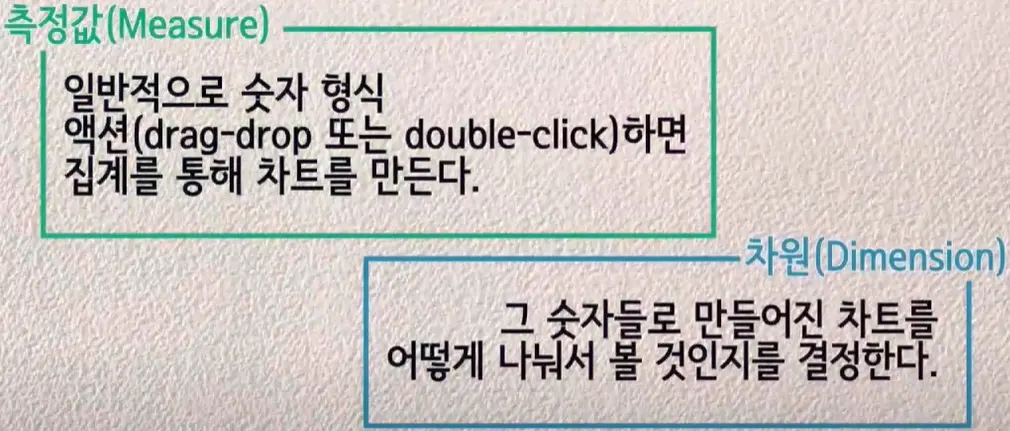1.
Explain what kind of information dimensions usually contain
차원이 일반적으로 포함하는 정보 종류 설명하기
2.
Explain what kind of information measures usually contain
측정값이 일반적으로 포함하는 정보 종류 설명하기
3.
Explain the difference between dimensions and measure
차원과 측정값의 차이 설명하기
•
측정값(Measure) - 녹색
◦
측정할 수 있는 정량적 수치 값을 포함.
◦
측정값을 집계할 수 있다.
◦
측정값을 뷰에 끌어 놓으면 태블로가 (기본적으로) 해당 측정값에 집계를 적용
◦
일반적으로 숫자 형식 액션(drag-drop 또는 double-click)하면 집계를 통해 차트를 만든다.
Which of the following functions can be used on string to create a measure?
→ COUNTD
If a continuous measure with all positive values is added to the Color area of the Marks card, what is the default?
→ A sequential color gradient
(If the values are all positive then a sequential color gradient will be used. If there are negative values then a diverging color gradient will be used. If the data is discrete a categorical pallete will be used.)
•
차원(Dimension) - 파란색
◦
그 숫자들로 만들어진 차트를 어떻게 나눠서 볼 것인지를 결정하다.
◦
정성적인값. 예> 이름, 날짜, 지리적 데이터
◦
차원을 사용하여 데이터의 세부 정보를 분류하고 나누고 표시할 수 있다.
▪
측정값을 뷰에 끌어 놓으면 집계가 되는데, 집계를 잘라서 보는게 차원이다.
◦
차원은 뷰의 세부 수분에 영향을 미침
Which field types are more common?
→ Discrete dimension, continuous measure
( In Tableau, it is more common to have discrete dimensions and continuous measures, although fields can also be set as continuous dimensions and discrete measure.)
